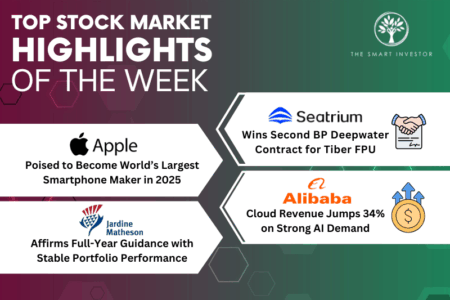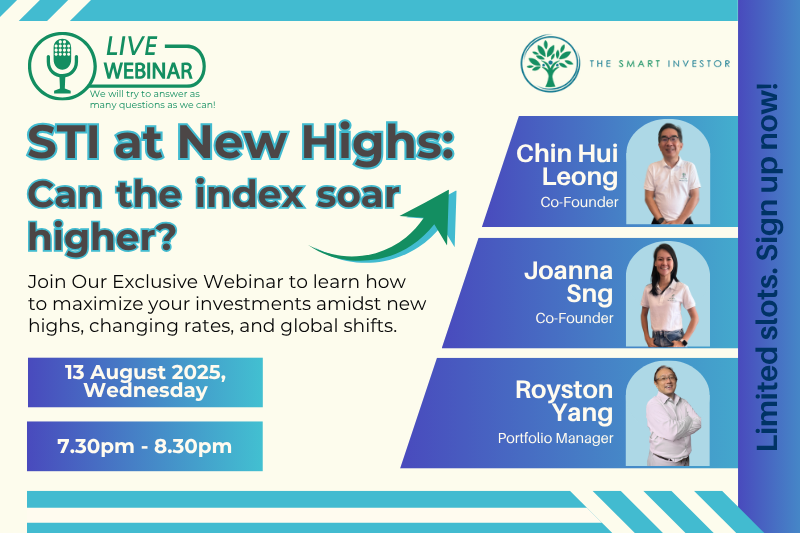US technology stocks are often among the top picks of Singapore investors.
Their size, innovation, and international reach are attractive, but there are still many myths attached to US tech stocks that are in Singapore investors’ minds.
Believing these myths can lead investors to overestimate the risks of investing in them and miss out on opportunities.
Here are three common myths about US technology stocks that need to be debunked.
Myth 1: US Tech Stocks Are Just “All Growth, No Dividends”
Truth: Many technology companies do continue to reinvest most of their profits to fuel innovation and future growth.
But some of them – including the biggest names – have reached a point where they are able to grow their business while rewarding their investors with consistent dividends.
Take Apple (NASDAQ: AAPL) and Microsoft (NASDAQ: MSFT) for example.
Both started out as “growth” companies in their younger days, but have since matured to become investment options that are stabler and also pay out reliable dividends.
Apple’s dividend per share has nearly doubled from US$0.51 in 2015 to US$0.99 in 2024.
Meanwhile, Microsoft’s payout has more than doubled to US$3.16 from US$1.29 over the same period.
Their dividend yields are modest, at around 0.4% for Apple and 0.7% for Microsoft, yet their payout ratios remain low at roughly 20% to 30%, giving them plenty of flexibility to keep their increasing dividends over time.
That steady growth contrasts with Singapore’s blue-chip banks such as DBS Group (SGX: D05) and Oversea-Chinese Banking Corporation (SGX: O39). They currently give strong yields of between 5% to 6% today but their dividends usually move in line with the interest rate cycle.
Meanwhile, Apple and Microsoft can raise their dividends through ongoing earnings growth and huge free cash flow, without relying on macroeconomic conditions.
Dividends from the mega-cap US tech stocks are growing faster than many traditional Singapore blue chips, supported by strong balance sheets and durable profitability.
For investors, they offer a rare blend of growth, stability and rising income potential.
Myth 2: US Tech Stocks Are Always Overvalued
Truth: Valuations are often stretched during boom periods, but numerous high-tech companies can justify their valuations through strong earnings and profitability growth.
Apple, for instance, trades at a P/E ratio in the low 40s, which is higher than its average P/E ratio of around 30 over the past five years.
But in that same period, Apple’s earnings per share (EPS) has effectively doubled, which represents an annual increase of nearly 15%, reflecting a steady demand for its products and services. This shows that Apple’s valuation is backed by consistent profit expansion rather than speculation.
Alphabet (NASDAQ: GOOG), Google’s parent company, trades at a P/E ratio of under 28, which is broadly in line with its five-year average.
The tech giant’s strong cash flow, dominant position in online search, continued growth in its Google Cloud division, and 414% – or 33% annualised – increase in EPS over the past five years, have helped keep its valuation stable even as it invests heavily in artificial intelligence.
Another good example is Microsoft. Its P/E ratio of around 37 is supported by a five-year earnings CAGR of 19%.
Microsoft’s operating margin in that period is between the high-30s and the mid-40s, highlighting its strong pricing power and operational efficiency, which is one reason investors are comfortable paying a premium.
Despite its rising profits and share price, the company’s forward P/E has remained around 33x over recent years, underscoring that its valuation has grown in step with its fundamentals.
Myth 3: US Tech Stocks Are Too Risky for Long-Term Investors
Truth: US tech giants flaunt “fortress” balance sheets with very low to no debt, brim with strong cash flows, while holding dominant market positions.
This makes them more resilient than many companies in cyclical industries.
Alphabet, for instance, held US$98.8 billion in cash and marketable securities as of the end of September 2025 and had debt of just US$21.6 billion.
It generated US$72.8 billion in free cash flow in 2024, a 5% year-on-year increase, and commands over 90% global market share in search. It also has a 12% share in the cloud computing infrastructure market through Google Cloud Platform.
Alphabet’s scale allows it to fund AI investments, absorb downturns in ad spending, and still return capital through share repurchases. As of 30 September 2025, the company is authorised to conduct up to US$74.8 billion on buybacks.
While tech stocks do experience short-term volatility in their stock prices, their business fundamentals – such as recurring revenue, pricing power, and dominant platforms – often make them less risky than many cyclical or debt-heavy businesses.
What This Means for Investors
US tech stocks are not one-dimensional growth plays.
Apple demonstrates how its dividends can grow faster than many traditional blue chips.
Microsoft shows that valuation premiums can be reasonable when backed by earnings expansion.
Alphabet proves that scale, cash flow, and technological leadership can make even the biggest tech names surprisingly defensive.
For Singapore investors, this means that owning US tech stocks isn’t just about chasing the next trend.
It’s about diversification, combining local dividend stalwarts such as DBS or OCBC with global innovators that can drive long-term capital appreciation.
Understanding this balance can help investors create portfolios that are both resilient and forward-looking.
Get Smart: Looking Beyond the Headlines
US tech stocks aren’t just hype-driven or risky.
They’re long-term wealth builders.
Investors should look beyond the headlines, focus on fundamentals, and use global exposure to strengthen their portfolios for the future.
Many investors think DeepSeek lowering AI costs means less revenue for tech companies. But that’s not the full story, and believing it could cost you. In our latest free report, we unpack a surprising insight from a top tech CEO who explains why lower AI costs may actually drive more tech spending, not less — and he’s got the numbers to prove it. If you’ve misunderstood this trend, you could miss out on some of the biggest investment opportunities. Click here now to access “How GenAI is Reshaping the Stock Market” today to get the full breakdown.
Follow us on Facebook, Instagram and Telegram for the latest investing news and analyses!
Disclosure: Joseph does not hold shares in any of the companies mentioned.





